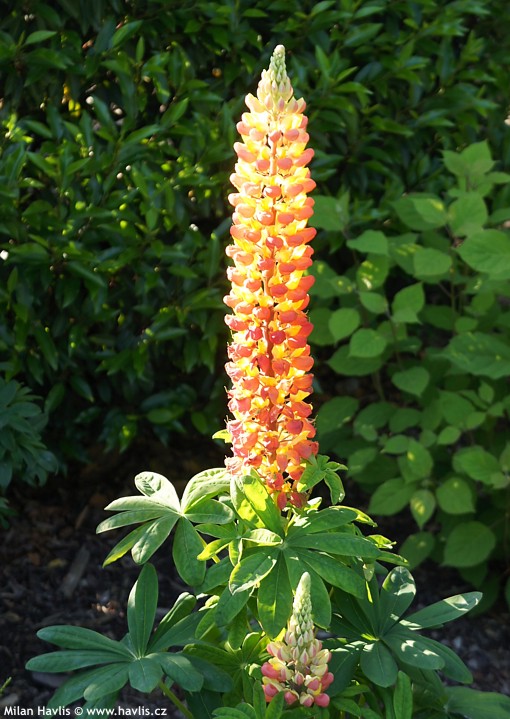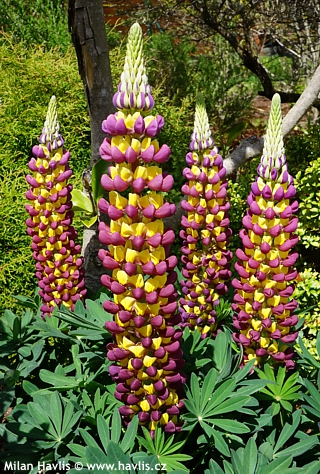Lupinus WEST COUNTRY™ 'GLADIATOR' lupines
size/type
tall perennial,tall perennial
usual height
0,8-1m
usual width
0,3-0,5m
leaves
deciduous broadleaf
colour of leaves
flowers
showy
colour of flowers
blooming time
June-July
location
full to partial sun
USDA zone (lowest)
4 (down to -34°C)
winter protection
for zone 5+6

for zone 7

categorized
Lupinus
Lupines are the inevitable item of English gardens as well as Czech woodlands. They come from North America and naturally grow in sunny locations of moist woodland edges and rocky slopes where their roots establish well in crevices that never lack moisture but are well draining. Deciduous, palmate leaves are deep green and very attractive as they are finely divided.Description of the plant:
Sarah Conibear from the Westcountry Nurseries is the breeder of many successful lupine varieties that have achieved a lot of medals including a gold medal from the Chelsea Flower Show Centenary Year. The nursery is located in the north-west of Devon, UK, and is proud to introduce so many gorgeous lupines including this one – The Gladiator. It has 80-90 cm tall stems with bi-coloured flowers. The upper lip is yellow and the bell comes out pure orange and matures to rich pink or almost raspberry purple colour. They start blooming in mid June, and may continue for 4-6 weeks if spent flowers are removed as soon as they begin to fade. If the plant is weak and unsightly after flowering cut it back and it will produce a nice mound of new foliage that will be attractive until the end of the growing season. Gladiator is a patented variety, protected by PP23074 and may not be reproduced without license.Lupines like free draining soil that retains moisture and is preferably acidic. They can fix nitrogen from the atmosphere and distribute it through their roots. This is why they are often used as pioneer plants in poor soils. Beware of slugs which can devastate both your seedlings as well as old clumps. The flowering spikes are sturdy but fleshy and should be planted where they can be protected from the extreme wind blasts that could bend or break them. Unlike sweet-lupines whose seeds are edible, ornamental lupines (bitter-lupines) can be harmful if eaten. These plants are short-lived and should be dug out in the spring every 3-5 years, woody parts removed, and new plants put pack to encourage fresh growth. Hardy to about -34°C.
Last update 17-06-2013
QUICK PRICE OVERVIEW
CURRENTLY SOLD OUT
WANT TO TRY A SIMILAR PLANT?



















